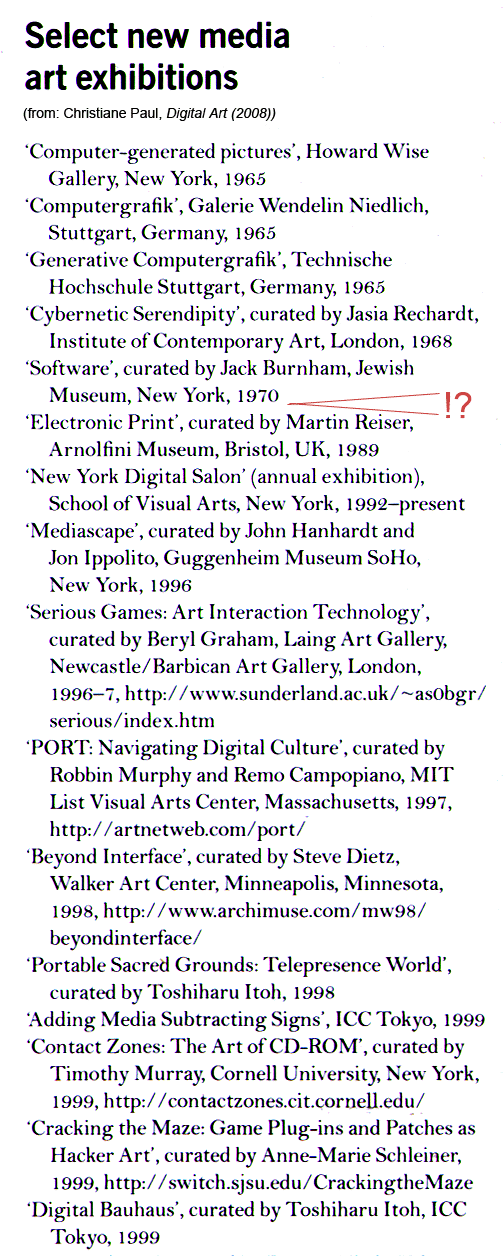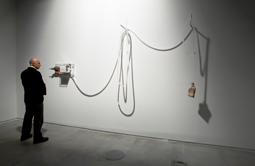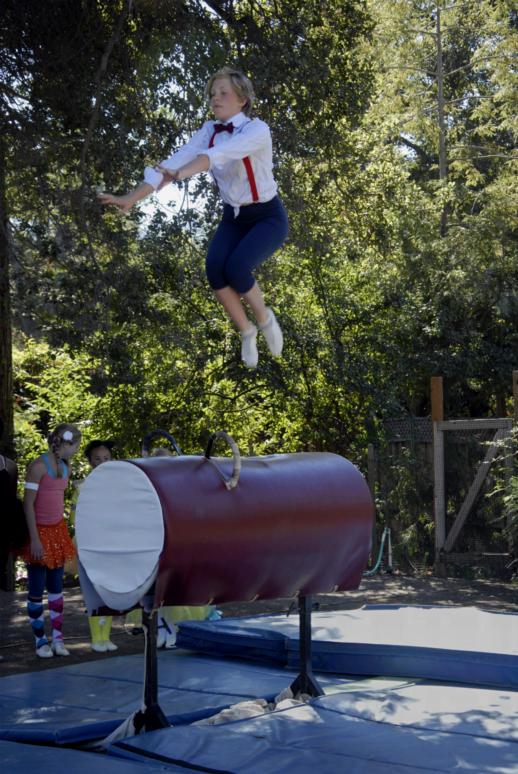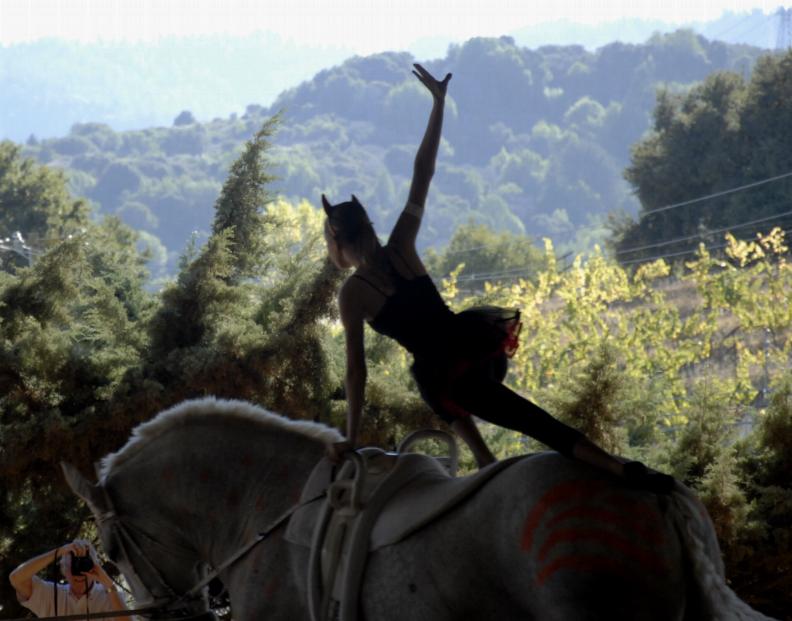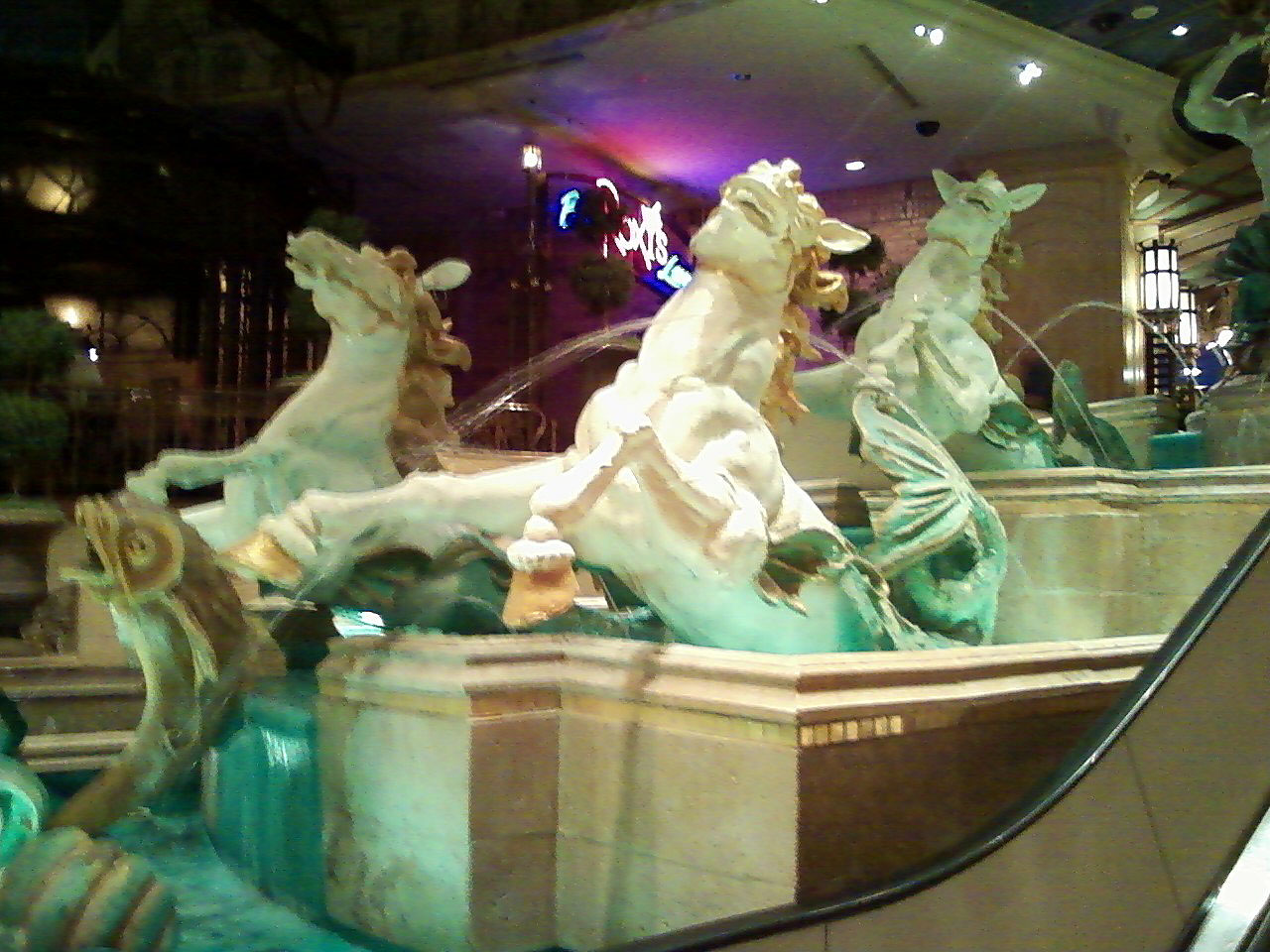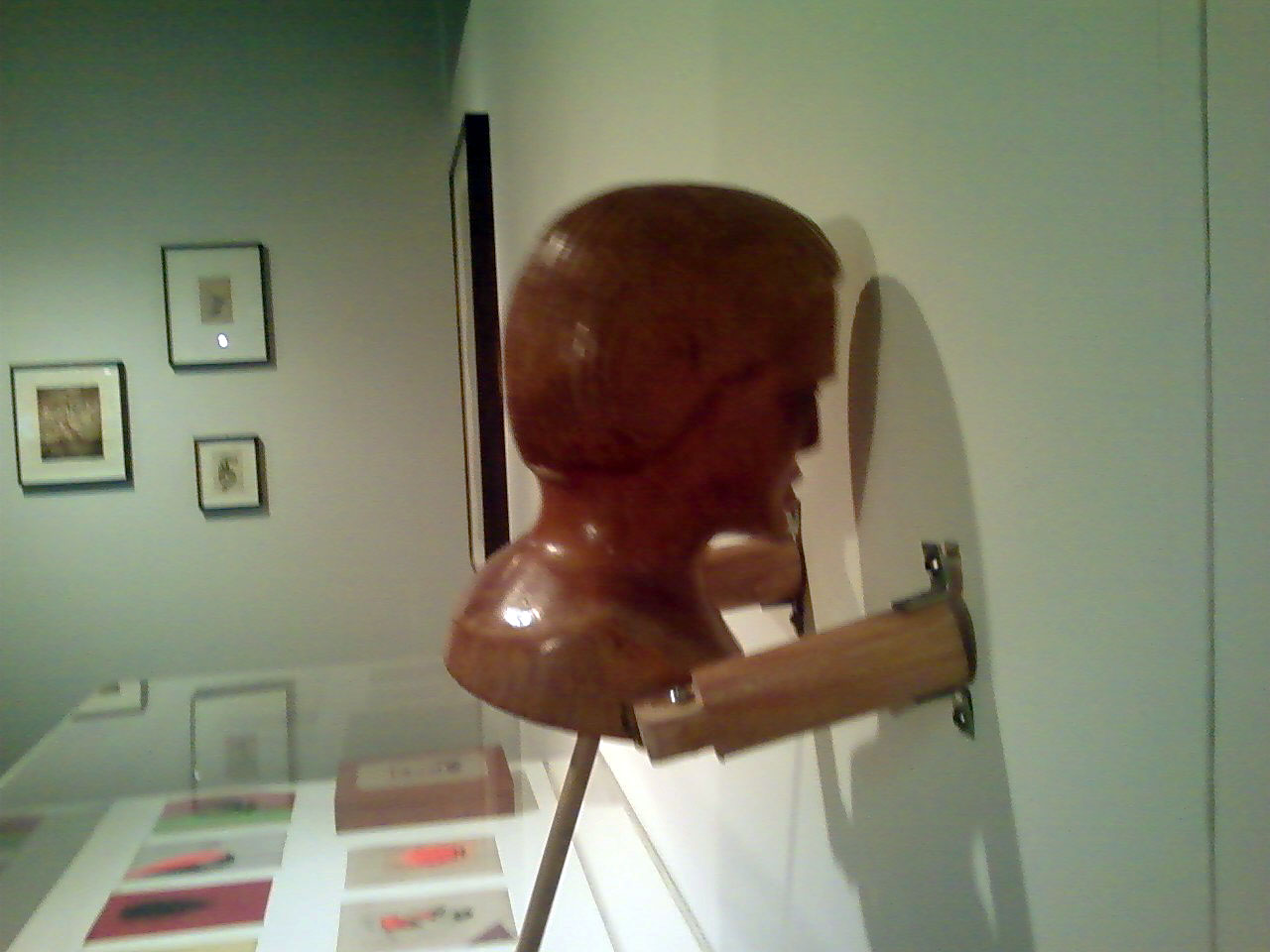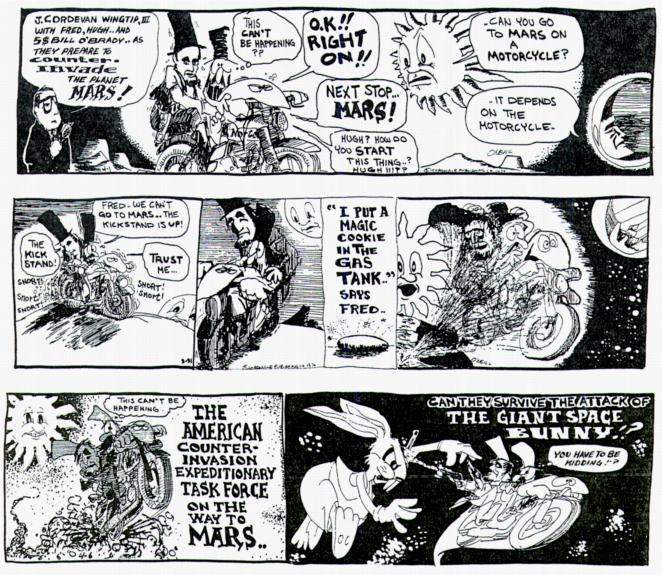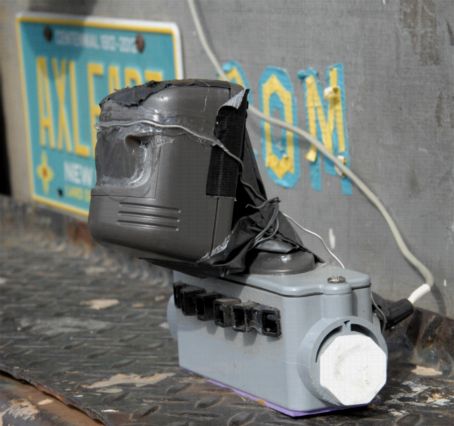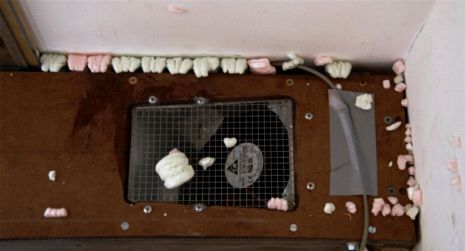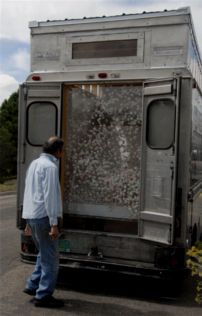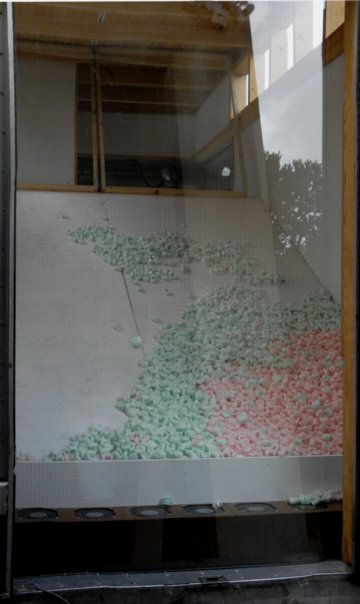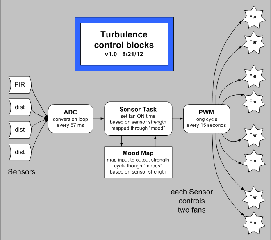Art and Technology
In 1966, with immense help from Bell Labs, Billy Klüver and Robert Rauschenberg and many others – who went on to establish Experiments in Art and Technology (E.A.T.) – produced a multi-part performance at the 69th Regiment Armory, in New York City – which btw was also the location of the famous 1913 Armory Show which introduced the Americas to all that scandalously decadent European Modern Art – 9 Evenings: Theater & Engineering. It was the first big collision of Art and (mostly) electronic Technology. And it was utterly panned by such luminaries as Robert Smithson as well as more mainstream critics. But in 20-20 hindsight it was one of the most amazing things to come down the pike in establishing what we now know as Art and Technology, ever.Two years later, in 1968, Cybernetic Serendipity, curated by Jasia Reichardt at the Institute of Contemporary Arts (ICA) in London, was the first large scale show of computer related artwork. It traveled to the Corcoran Gallery in Washington, DC and, in 1969, parts of the show became the founding exhibits at the newly opened Exploratorium in San Francisco (where I had the honor, ten years hence, of breaking a couple of them...). It included a broad range of visual art, computer demonstrations, and even a bit of music here and there. You can find a scanned pdf of the (partial) show catalog here: Cybernetic Serendipity.
An interesting short paper that looks at the contents, organization, and funding models of the show, from a near-half-century perspective is here:
MacGregor, B. (2002, October). Cybernetic serendipity revisited. In Proceedings of the 4th conference on Creativity & cognition (pp. 11-13). ACM.
Around this same time the American artist and critic Jack Burnham began to hypothesize Systems Art (he actually started with Cybernetic Art but quickly expanded his horizons):
Burnham, J. (1968). Systems Esthetics. Artforum, 7(1), 30-35.From the article:
The systems approach goes beyond a concern with staged environments and happenings; it deals in a revolutionary fashion with the larger problem of boundary concepts. In systems perspective there are no contrived confines such as the theater proscenium or picture frame. Conceptual focus rather than material limits define the system. Thus any situation, either in or outside the context of art, may be designed and judged as a system. Inasmuch as a system may contain people, ideas, messages, atmospheric conditions, power sources, and so on, a system is, to quote the systems biologist, Ludwig von Bertalanffy, a "complex of components in interaction," comprised of material, energy, and information in various degrees of organization. In evaluating systems the artist is a perspectivist considering goals, boundaries, structure, input, output, and related activity inside and outside the system. Where the object almost always has a fixed shape and boundaries, the consistency of a system may be altered in time and space, its behavior determined both by external conditions and its mechanisms of control.Developing the above in 1970, he published this essay in a collection of papers titled On the Future of Art, edited by Arnold Toynbee under the auspices of the Guggenheim Museum:
Burnham, J. (1970). The Aesthetics of Intelligent Systems.And later that year he curated the Software show at the Jewish Museum in NYC, which illustrated many of these ideas using a broad range of technological and conceptual art practices. You can find catalog excerpts here: Software. Unfortunately this show was a near-complete disaster on both technical and social grounds, and has more-or-less disappeared from view. It was supposed to travel to the Smithsonian in Washington, DC, but circumstances (a fire at the Smithsonian) intervened and saved everyone the embarrassment. Aside from its disastrous run, Software presented a view of the state-of-the-art-in-technology-and-concept that may never be repeated.
For more background on the Cyber-Arts of the 1960's I recommend:
Burnham, J. (1968). Beyond modern sculpture: the effects of science and technology on the sculpture of this century. G. Braziller.
The last chapter of which you can steal here: The Future of Responsive Systems in Art
Benthall, J. (1972). Science and technology in art today. Thames and Hudson.
Which still appears to be available used and reads as pretty much contemporary. The point to which I'm circuitously trying to get around to here...
Cybernetics
So what is this cybernetics stuff they were all talking about anyway?To quote from The Wiki:
[coined by Norbert Wiener in 1948] as "the scientific study of control and communication in the animal and the machine." Cybernetics from the Greek meaning to "steer" or "navigate." Contemporary cybernetics began as an interdisciplinary study connecting the fields of control systems, electrical network theory, mechanical engineering, logic modeling, evolutionary biology, neuroscience, anthropology, and psychology in the 1940s, often attributed to the Macy Conferences. During the second half of the 20th century cybernetics evolved in ways that distinguish first-order cybernetics (about observed systems) from second-order cybernetics (about observing systems). More recently there is talk about a third-order cybernetics (doing in ways that embraces first and second-order).Here are a couple other good resources to get a handle on:
A general overview:
Paul Pangaro's "Getting Started" Guide to CyberneticsAnd a really thorough but succinct description of the players and fields involved:
Ben-Ali, F. M. (2007). A History of Systemic and Cybernetic Thought From Homeostasis to the Teardrop.
Conceptual Information Theory
Then we throw Information Theory into the mix as well. Wiener, in his book Cybernetics, devotes a chapter to beating around the bush defining it, but Claude Shannon's paper from the same year nailed it down:Shannon, C. E. (1948). A mathematical theory of communication. The Bell System Technical Journal, Vol. 27Artists, especially of the Conceptual variety, glommed-on to these ideas and did what they usually do, jump to conclusions... Here's an excerpt from a review of:
Moles, A. (1968). Information theory and esthetic perception. Trans. JE Cohen.
Let us consider perception by an individual human being as communication from the external world to that human, says Moles, now a professor of philosophy in Strasbourg. Let us consider in detail artistic communications, since it is particularly easy to isolate them. Then esthetic perception, as a special kind of communication, should be amenable to analysis by information theory, Moles concludes, since information theory is a mathematical theory of communication.Using the above as corroboration, My Humble Opinion is that the most egregious excesses of Conceptual Art, where Art is reduced to Information, result from this sort of mis-reading of Shannon as having something to say about Meaning. For a little more detail have a look at the links on my page: Shannon's Information Increased
This reasoning is an example of what philosophers call the fallacy of equivocation: what Shannon and Wiener, inventors of information theory, meant by "communication" is not what Moles has in mind...
Cybernetic Art
On the other hand Cybernetic Art itself got a little better play, especially in the 1960's work of British artist Roy Ascott as described here:Shanken, E., Clarke, I. B., & Henderson, L. D. (2002). Cybernetics and Art: Cultural Convergence in the 1960s. From Energy to Information.
Moving away from the notion of art as constituted in autonomous objects, Ascott redefined art as a cybernetic system comprised of a network of feedback loops. He conceived of art as but one member in a family of interconnected feedback loops in the cultural sphere, and he thought of culture as itself just one set of processes in a larger network of social relations. In this way, Ascott integrated cybernetics into aesthetics to theorize the relationship between art and society in terms of the interactive flow of information and behavior through a network of interconnected processes and systems.But in the abstract of another paper, Shanken indicates that Cybernetic Art got entangled with Conceptual Art and the Technology component was dropped like a hot potato:
Shanken, E. A. (2002). Art in the information age: Technology and conceptual art. Leonardo, 35(4), 433-438.
Art historians have generally drawn sharp distinctions between conceptual art and art-and-technology. ... By interpreting conceptual art and art-and-technology as reflections and constituents of broad cultural transformations during the information age, the author concludes that the two tendencies share important similarities, and that this common ground offers useful insights into late-20th-century art.
So. Something went very wrong.
Strangely enough, at just about the same time as Systems Art lost its Technology, Cybernetics itself met a similar fate. In the early 1970's Artificial Intelligence research retrenched and rejected its cybernetic neural-net component – partially due to the Minksy, Pappert book Perceptrons – and turned towards Symbolic and Expert Systems work. It took another ten years for the tide to begin to turn back with Connectionism and Behavior Based Robotics.And in the world of Electronic Music, which is hardly mentioned in Art books, much of the same dynamic was playing out. Work during the 1960's that incorporated feedback systems of various kinds – see my Coincident Feedback entry – was swept under by a wave of commercial synthesizers made for pop-music recapitulations – c.f. the David Dunn quote in my Born Rationalizing Culture California entry.
To try to get a handle on all this I've been making a list of what I find to be landmarks in the progress of Art, Music, and Cybernetics since WWII:
The first interesting thing is that one needs to go to three completely different floors of the library to find the relevant historiography. Even though the folks were often talking-to and working-with each other, there's very little cross over – books are about one or the other but never all – so it's very hard to see the similarities. And the second interesting thing is that, once you see them all lined up:
Going back to Jack, he published a paper in 1979 that provides a critical analysis of some of these major events. I think the title reflects his position:
And as another little bit of evidence for this I noticed a significant lacuna in the listing of major shows in:Burnham, J. (1979). Art & Technology, the Panacea that Failed. The Myths of Information, ed. Kathleen Woodward, Coda Press
Paul, C. (2008). Digital art. Thames & Hudson.
Yup... it all (save two minor exceptions) drops out of existence between 1970 and 1996... Now we need to bear in mind that the author is only considering Digital art, and not all Art/Tech endeavors including most Audio or Sound art – which did carry a sputtering torch into the new century -- nor even (Analog) Video...but...but...
Stay Tuned!
(continue to Part 2: The Perfect Storm)
